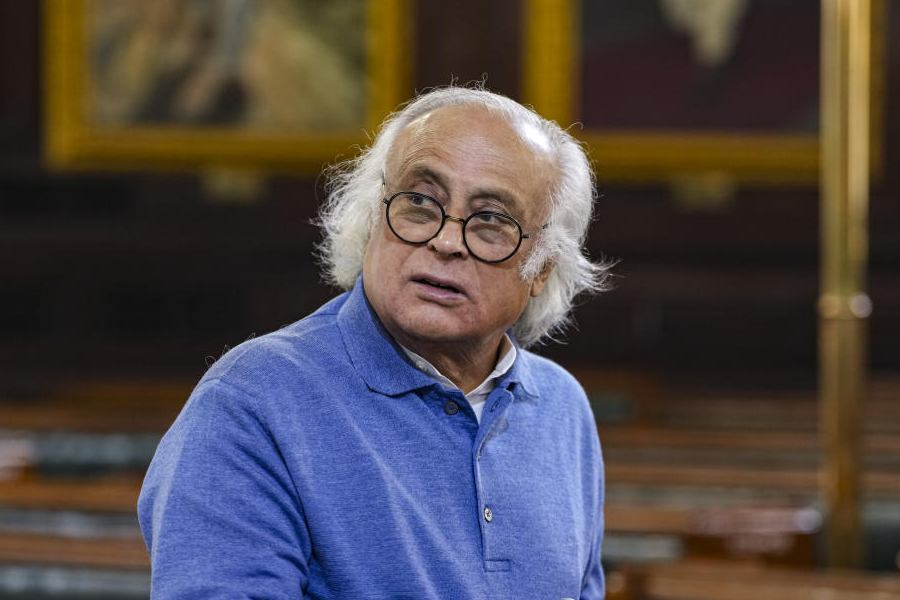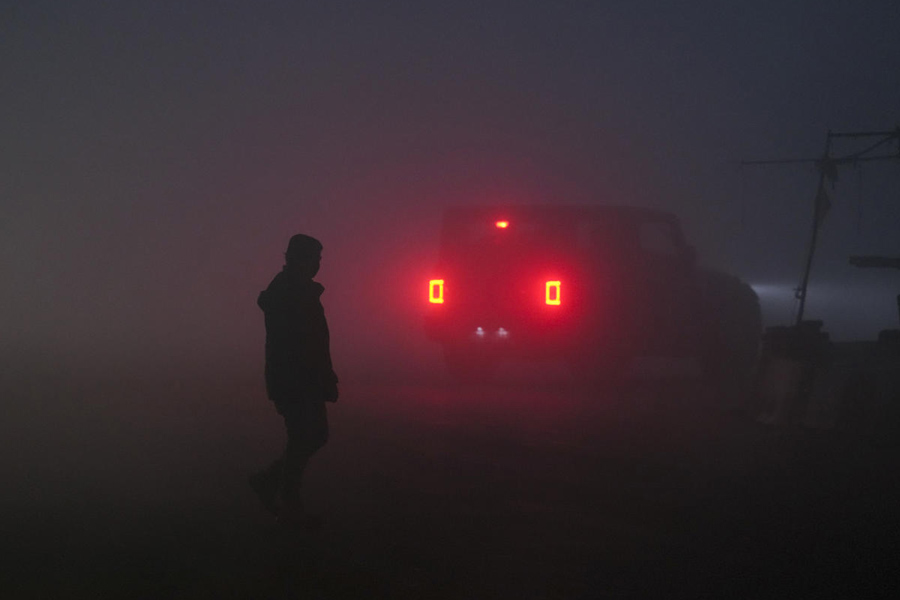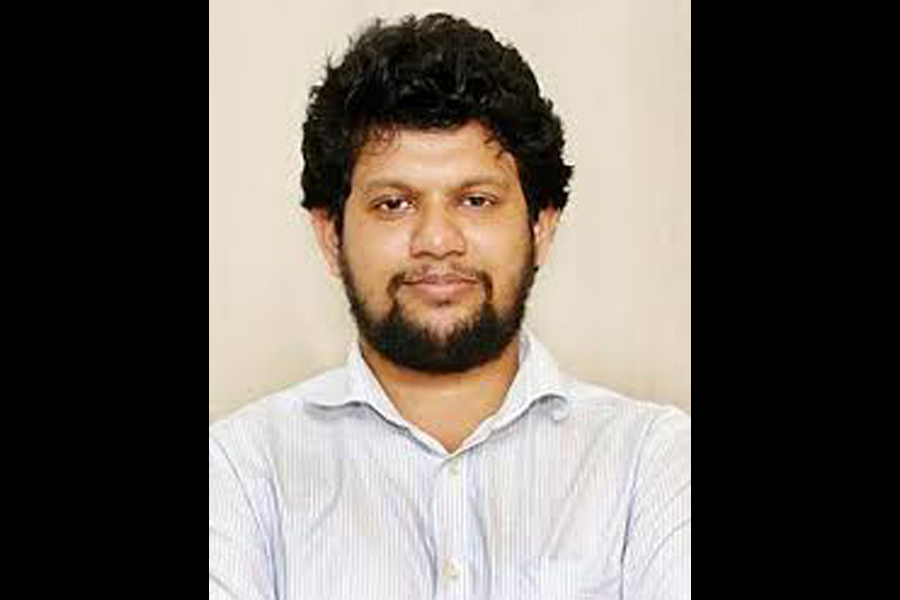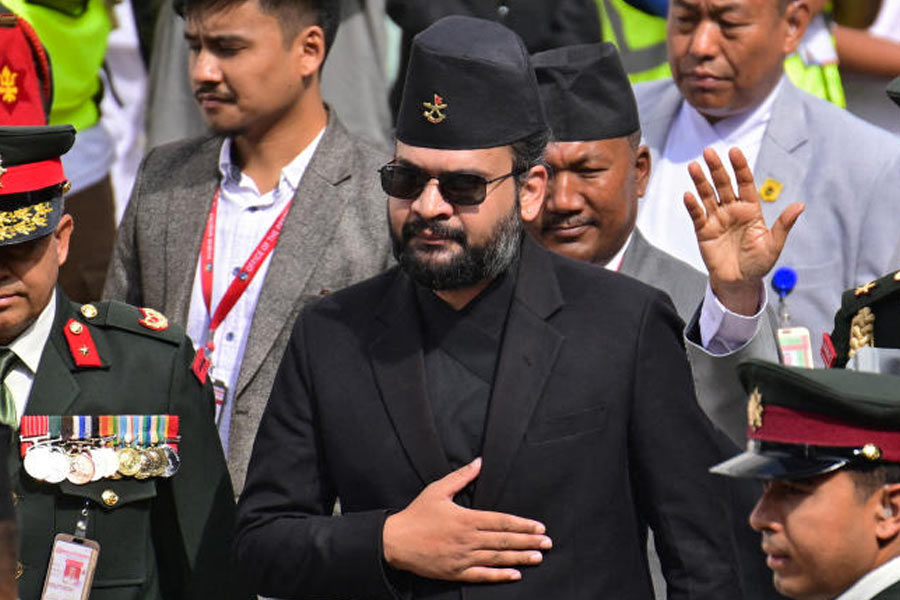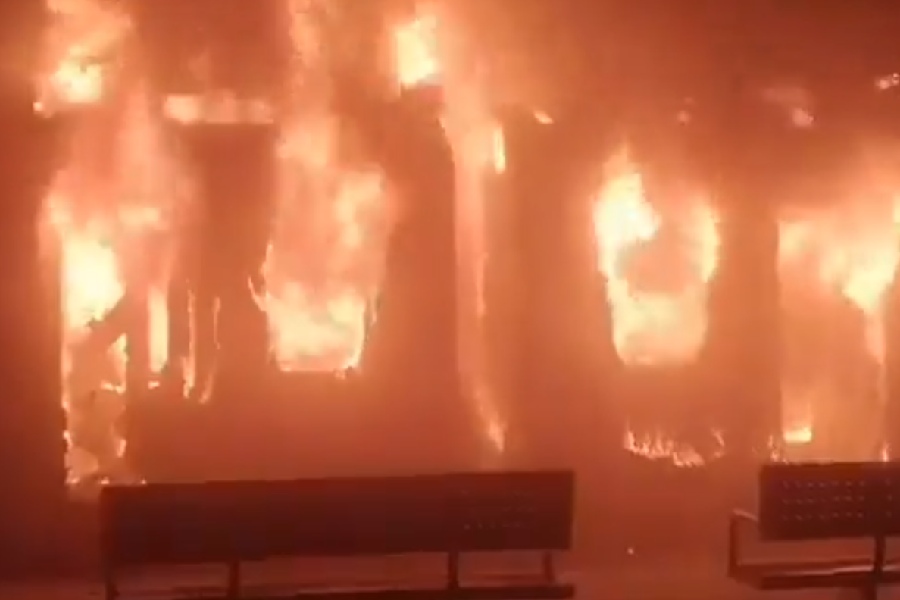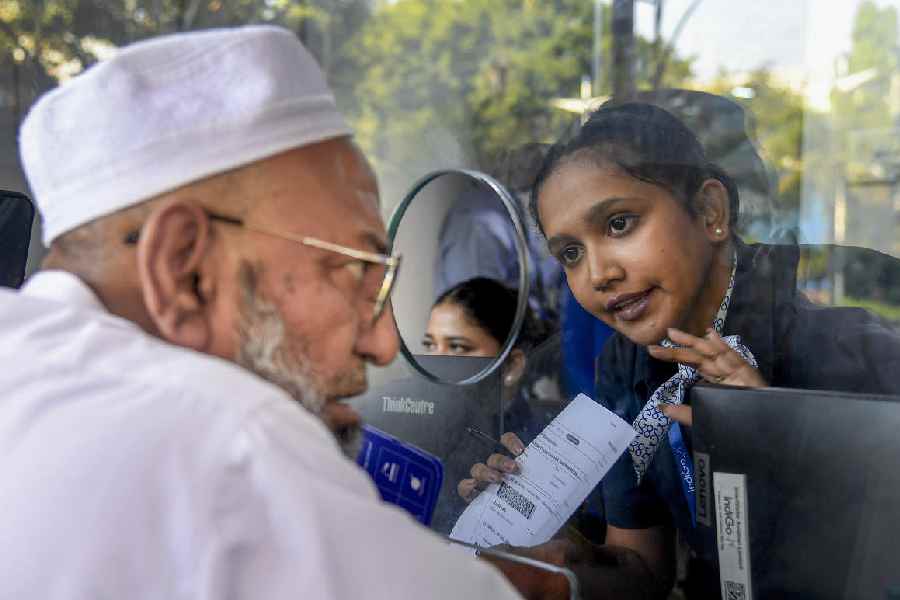
For a moment, I feared that the aircraft — Flight 715 of Bhutan Airlines from Calcutta to Paro — would tilt to the left. Nearly a quarter of an hour after take off, as we closed in on the Land of Druk, the captain announced that some peaks of the Himalayan range, including Mount Everest, were now visible to our left. The announcement prompted nearly all the passengers — a hysterical gaggle of mostly Gujarati and Marathi tourists — to rush towards the windows on one side, spurring my thoughts towards the possibility of the flight tilting under their collective weight.
To be fair, I had my eyes pressed to the window too. And there it was — a glittering chain of majestic, snowy peaks that had looked like a floating cloud from afar. “Hee kharokhara Mount Everest ahe (It is really Mount Everest!),” exclaimed the bespectacled Maharashtrian teen sitting beside me. I could understand why he was shrieking. Having been on two trips to Darjeeling during which the Kanchenjunga had eluded my sight and entreaties, the joy of catching a glimpse of Everest — the pilot said it was so — is difficult to describe. And things seemed to be adding up quite well. A flight full of happy souls were headed towards a nation that had conceived of and implemented the idea of gross national happiness.
So I was not quite surprised when, upon my descent, I was greeted by a smiling gentleman, who helped me breeze through the formalities of immigration and then led me to a waiting car that would take me to my destination — the Udumwara Resort. Upon reaching it, I muttered a quick thank you to GoIbibo under my breath. For the app had helped me find a resort that is a dreamscape: a river — the Paro — gurgled past the spacious premises; my room — the size of a moderate flat in Calcutta — looked out towards verdant mountains; the hotel staff were especially warm; and there was the cat. It jumped on my lap and stayed put just after I had signed on the register. It was difficult to say who felt more at home: the cat or I.
Paro is usually treated as a pit stop by visitors because it is home to Bhutan’s only airport. Their eyes are set on Thimphu or, even further, Punakha. But I had intended to stay put — just as the cat had — in Paro. In the course of a magical week, I discovered, slowly, that apart from its chirpy river, a deliciously cool climate, green-topped mountains and a silence that is broken occasionally by the raven — Bhutan’s national bird — Paro possessed other treasures.
Some of them are well-known. Taktsang Lhakhang, also known as the Tiger’s Nest, is a popular attraction. The remote monastery, which was built on a vertical cliff-face in the 17th century, can be reached only after a difficult trek that takes a couple of hours. Of course, the slightly rotund tourist can ride a pony, but the horses climb only half the way. The remaining journey, through still forests bathed in slanting rays of light, has to be completed on foot.
Equally impressive is the Rinchen Pung dzong or the Paro dzong. Each of Bhutan’s 20 districts, I was told, has a dzong, a combination of a monastery and an administrative office. The one in Paro, especially its central tower, was stunning. Tourists can hire guides — most of them are young men and women, knowledgeable and deeply respectful of their country’s history and traditions — who would explain the dzong’s intricate religious rituals as well as its fascinating architecture that is a mix of wood and stone. The dzong offers a stunning view of the whole of Paro, which lay covered in a blanket of mist. Its other attractions include a traditional wooden drawbridge under which flows pristine waters. The Drukgyel dzong in another part of Paro — it is quite ancient too — is under renovation at present. I could not make much of its ruins after a short, but laborious, climb.
Then, there is National Museum. Among its exhibits are stunning masks. Photography is not allowed inside the museum but it is, nonetheless, a great place to learn about Bhutan’s culture, traditional dances and its religion. Unfortunately, most visitors, many of them were from India, seemed more inclined towards taking selfies with their noisy broods.
And, finally, there is the Kyichu monastery built in the 7th century by a Tibetan king. Its four orange trees, having been blessed by divinity, are said to bear fruits throughout the year.

Rejuvenate the spirits
But not all of Paro’s delights are related to nature, history and culture. Paro is also a foodie’s paradise. Meat is very popular in the Bhutanese cuisine, so the meat-loving Bengali is likely to fall in love with the Tshoem (made of beef and mushroom) and Kewa Phagsha (spicy pork and potatoes) that are prepared in a number of local eateries in the Paro Market area.
Those concerned with either their calories or cholesterol should pause before seeking solace in the Ema Datshi — a delicious vegetarian fare that is also considered to be Bhutan’s national dish. This preparation, which comes in a number of variants, including yummy mushroom, has dollops of a cheesy sauce and a dash of fiery chillies.
Having ingested the Ema Datshi, one may be in a hurry to seek out a patisserie. The Brioche Cafe is the answer to such sweet dreams. Run by a restaurateur with work experience in a five-star establishment, Brioche serves a wide range of delectable desserts, including a sinful, gooey chocolate mud pie. But Brioche hits the bullseye with its apple-cinnamon tea. The refreshing beverage is the perfect companion for those willing to watch the world go by in Paro.
None returns with an empty stomach after visiting the Paro Market. Hands are likely to be full as well. The market — neat rows of shops on plastic-free streets — is a treasure trove of exquisite Bhutanese handicrafts, woollens (a necessity given the cold winters), trendy shoes, the gho (the long, knee-length dress of Bhutanese men), the kira (the colourful garment worn by Bhutanese women) and also products made of local paper. The handicrafts are expensive, but shoes, bags and clothes are a steal, given the tax exemptions. What one does not see — perhaps mercifully — are shops selling SIM cards and mobile phones. However, given the exorbitant rates of international packs, it makes sense to purchase a local SIM card from the airport in Paro.
Having pleased the consumer and his/her palate, Paro takes care to rejuvenate the spirits. Its famed hot stone bath is said to be the perfect antidote to stress (brought upon chiefly by excessive eating and shopping). Nearly every second establishment in Paro, big or small, advertises these special baths that involve lying in a tub full of water that is heated by mineral-rich stones. But the place to go to would be the facility run by the Thinley family. The setting is spectacular: one can see a snow-topped peak from inside the room with the baths. A tasty treat of home-cooked food is an additional benefit.
What Paro offers in abundance is time — to think, to dream or to simply while away. The pleasure of listening to the river, while watching the peaks change colour as the light begins to wane from noon to dusk to night, is fleeting — too fleeting — as one prepares to return to a city broken by its own pace, din and emptiness.
But return one must. I did too, carrying the faint sounds of Paro, the jovial river, inside my head.



